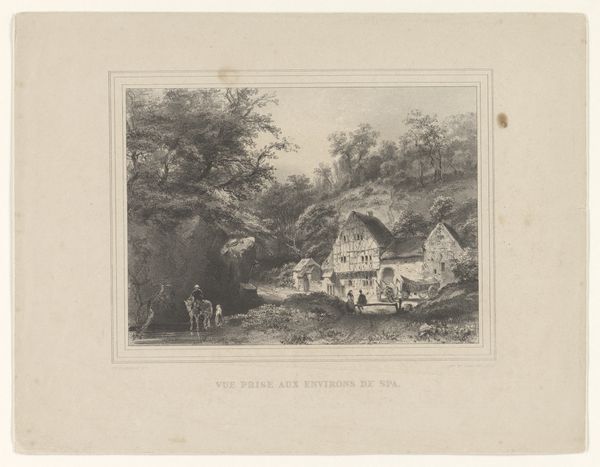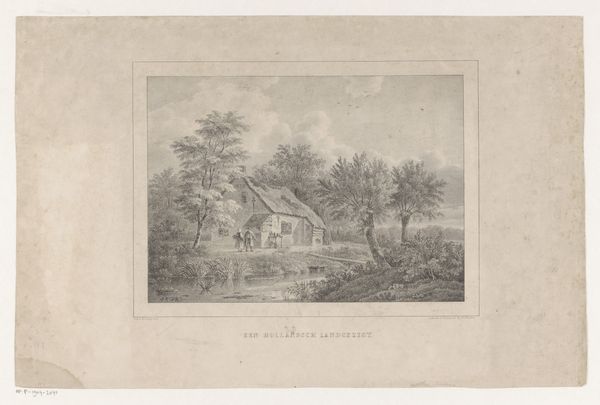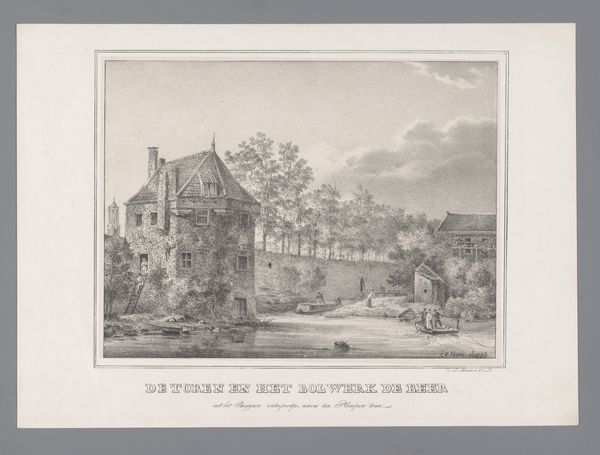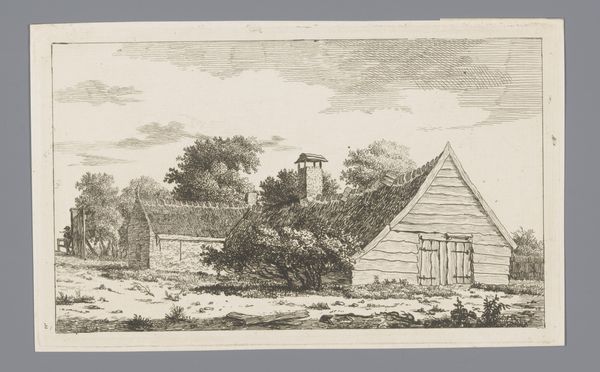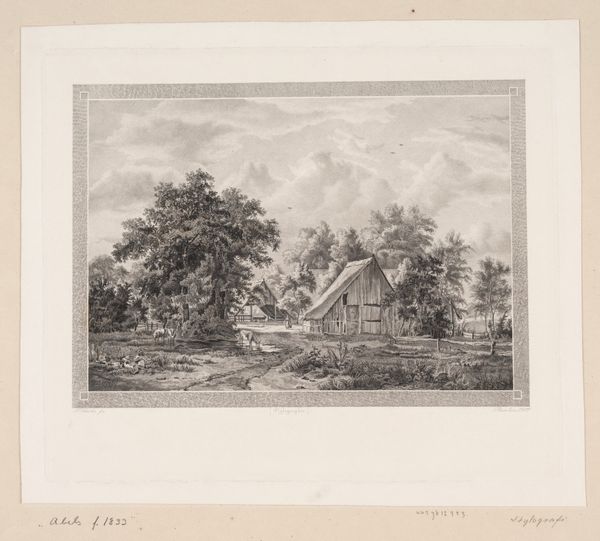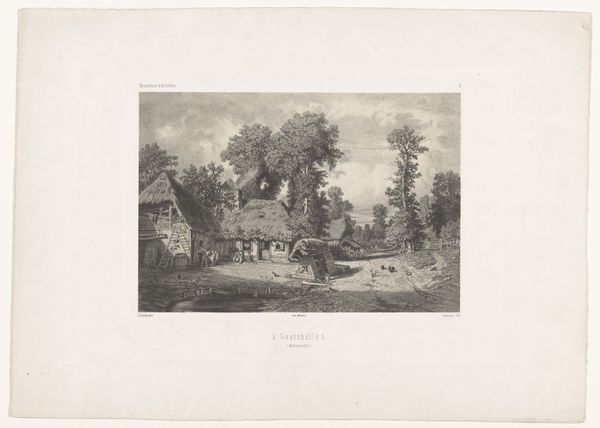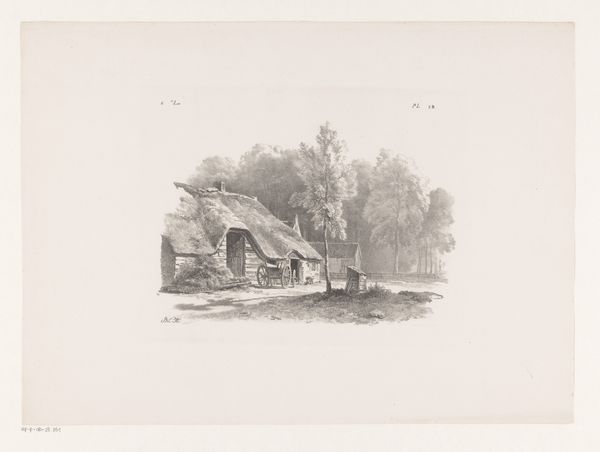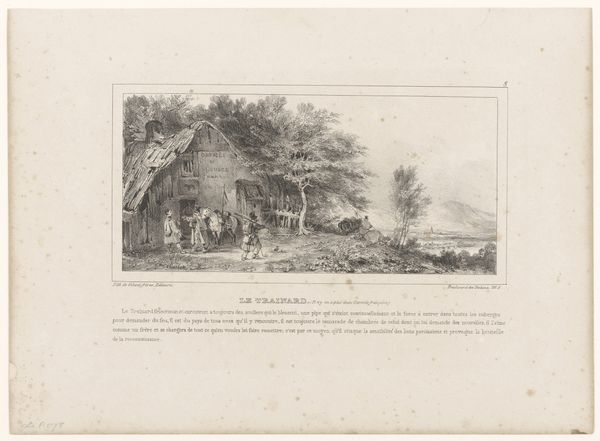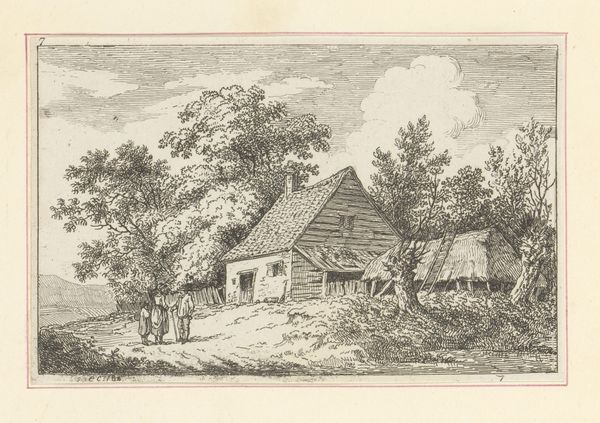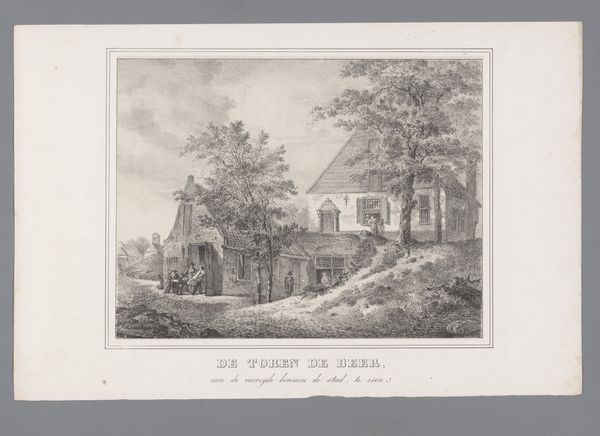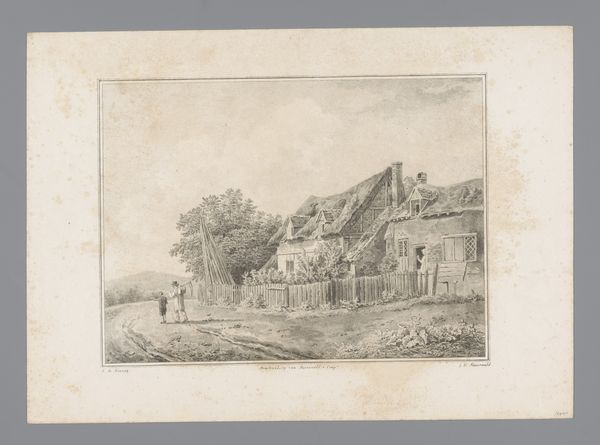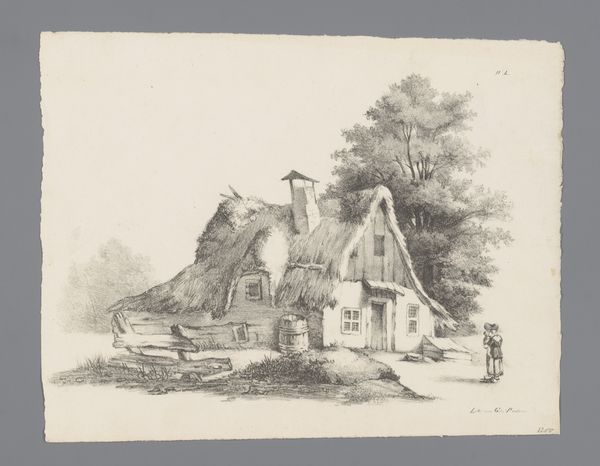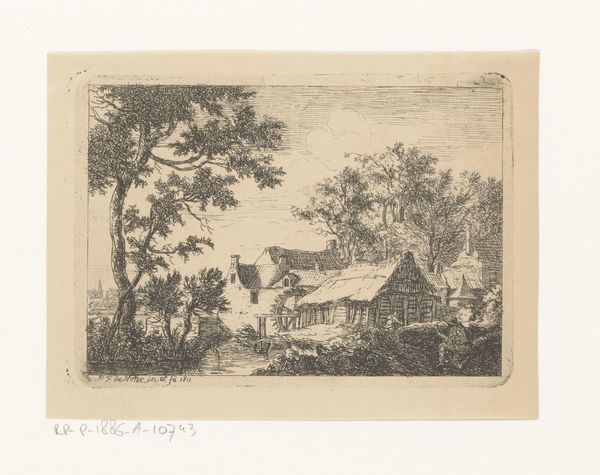
drawing, etching, paper
#
drawing
#
dutch-golden-age
#
neoclassicism
#
etching
#
landscape
#
paper
Dimensions: height 280 mm, width 415 mm
Copyright: Rijks Museum: Open Domain
Editor: This etching by Cornelis van Hardenbergh, "Stadstoren De Vos in Utrecht," from the early 19th century, depicts a rather rustic scene. What strikes me is how much detail he gets into, just using line and tone on paper. What aspects stand out to you? Curator: Well, let's think about the material conditions of its production. It's not just about skillful execution, but about the etching process itself – the acid, the metal plate, the press, the paper. This wasn’t mass production, but it suggests an increasing ability to disseminate imagery beyond unique paintings. What impact might that have had on the perception of landscape, or architecture for the public? Editor: I hadn’t thought of that! It almost democratizes art to a degree, but the original landscape is still this really idyllic, pre-industrial scene. Curator: Exactly. The materials contribute directly to its accessibility. Consider, too, how an etching like this might function in relation to painting at the time. Was it a preparatory sketch? Or a cheap way to see artworks when you could not visit them yourself? Was the image viewed as lesser-than because it was reproducible? It is still viewed as lesser than, why do you think this is? Editor: That's interesting. So the "aura" of a unique painting, versus something like this which is more of a multiple. Does that then affect how we value the artist's labor and the final product? Curator: Precisely! We often overlook the societal frameworks surrounding the materials themselves, shaping our understanding and assessment. How does seeing the landscape represented in print impact our relationship to it? Does it mediate our experience, transform it into a commodity? Editor: I’m seeing this landscape in a totally different way now! I originally reacted to this artwork just at a visual level, but you’ve made me consider this work of art, as an object of material culture as well. Thank you! Curator: It goes both ways! Thinking about the labour and conditions of material production always makes the viewing experience far richer for me.
Comments
No comments
Be the first to comment and join the conversation on the ultimate creative platform.
